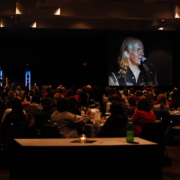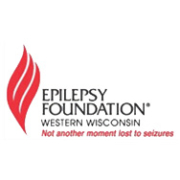Choosing to Change
As early as I can remember I have loved music and wanted to play music. I struggled in my first attempts like we all do. Piano, trumpet, drums….all proved too difficult or maybe I lacked enough grit at that age. One of the great benefits of music education and learning an instrument is that it teaches us to control our bodies. From how we sit to how we stand, from how we use our breath to how we use our fingers, music is the display-case for the wonder of the human brain controlling the body, connecting soul and emotion, and to ultimately share the miracle of human potential through the vehicle of sound. And the deeper a student gets into their craft the more amazing this ability becomes. Virtuoso players don’t have to think about their bodies when they play. They have transcended the need to consciously control their movements and effortlessly perform physical tasks of immensely complex and intricate muscle movements and here’s the real kicker – they can manipulate the slightest movements to create endless variations of expression that give life to the music in very noticeable ways. Much of the joy I gather from music is the joy of celebrating this amazing body that we as a human family often under-appreciate.
So, I finally found a good fit when I picked up a guitar the summer after 7th grade. What felt awkward about other instruments fell to the wayside and I began learning on my own, from other kids, from watching music specials on PBS and playing 45’s over and over while trying to copy the sounds with my own fingers. I can’t tell you how many times my mom stormed up the stairs and yelled “Put down that guitar and come to dinner – we’re all waiting!” Music just brought me happiness…. and playing the guitar gave me purpose. It came at a perfect time in my life during those uneasy teen years and I don’t know what my life would have been like without it. Our schools did a great job of showcasing music and every talent show became the next focus. By great fortune I was surrounded by some very talented classmates and we formed a band that was soon being booked professionally. If we weren’t playing a show you count on one thing – we were busy practicing…..unless of course we were in school or sleeping!!!
I share this because we all have things we love to do, things that bring us great joy which our bodies must function properly in order for us to perform. Music is just one of them – but it was the biggest part of my life for decades. I went on to earn a degree in guitar performance at the University of Southern California during which time I increased the “mind-body” or “brain-body” connection with each increasingly difficult piece of music they demanded. I veered off into my own experimentation after graduating and built a career around playing the guitar in a way that most people thought impossible by putting both hands up on the neck of the guitar and hammering out the notes with each finger. I stayed focused and true to my dream of sharing music with anyone who would listen. By 1989 I was touring the country performing over 200 concerts a year. My dream lasted almost a decade.
In 1998 while on my way to shoot the cover of my 2nd international release for Narada Records, I stopped by my parent’s house to drop off my 2 year old. The streets and sidewalks were slick with ice and I was in my photo-shoot wardrobe with a pair of dress boots on. As I lifted my son Blaise out of his car seat his boot caught on the strap and as I lifted him higher trying to free him I lost my footing. I lurched to keep his little head from crashing six feet down to the rock hard cement. We tumbled…my left arm flailing out as the only thing to break our fall. As we hit the ground together pain seared through my hand. Blaise was not hurt but something was definitely wrong with my hand. I looked and saw both my middle and ring-fingers had dislocated and were grotesquely out of joint. Without even thinking I grabbed them both and with one jerk re-set them and shoved them into the snowbank where we lay. After a trip to the ER for x-rays which came back negative for any fractures, I hustled over to the photo-shoot. Close inspection of that CD cover-shot reveals a terribly swollen set of knuckles!
Over the next six weeks I rehabbed with help of physical therapy and managed to play well enough to begin my 100-city tour in support of the new CD release. I remember my hand feeling somewhat out of balance and just attributed it to the stiffness that lingered in my two knuckles. But as the tour wore on a couple of my better known pieces began giving me trouble. That automatic “no need to think about it” state of mind was suddenly replaced by moments of sheer panic.
These were solo performances. No one else on stage. Nowhere to hide when the wrong notes come out. I always shoot for making a performance memorable as opposed to perfect which means I’ll give it my all every night. I’ve learned how to let go of my mistakes as quickly as they happen. This is something I wish I was better at in other areas of my life but it is particularly important on stage or the pressure becomes unbearable and creates more problems. So for me to panic would take something quite shocking. Not like missing an unrehearsed spontaneous attempt at the extraordinary. If I miss a note in a moment of inspiration I let go of it immediately and move on. What was shocking to me was missing notes and phrases I’d played perfectly THOUSANDS of times without thinking. Losing control of my body, of my music, of the beauty of the moment, of the simplest series of notes, was not only shocking and humiliating – it was utterly unexplainable!!!
I had never ever heard of a condition like what was happening to me. I had graduated from a highly respected university school of music and never heard of any such threat to a musician’s career. I was convinced it was something mechanical, something orthopedic, related to my knuckles or maybe carpal tunnel. After the tour I talked to many of my musician friends and they all said I was playing too many shows especially with my unusually athletic and physically aggressive style of guitar playing. My mentor, John Stropes at the University of Wisconsin/Milwaukee, agreed and recommended I take some time off which I did.
After resting my hands for almost two months I began rehearsing and was devastated to find that things had gotten worse. It felt as if some evil force had entered my wrist and fingers and was randomly pulling on my muscles and tendons. My ring finger wouldn’t lift away from the strings unless I put all my mental powers to make it do so. This was utterly unbelievable to me and I immediately made an appointment at a hand clinic in St. Paul. After being thoroughly evaluated by the hand specialist he shook his head and said, “I find absolutely nothing wrong with your hand. It is just fine. Are you sure you don’t want to see a psychologist?” I drove home thinking I must be losing my mind. Everything I loved about my life as a musician was being torn away from me and I was certain there was something wrong – I could feel something wrong in my hand….So how can it all be in my head???
I heard the word “dystonia” for the first time about six months later when visiting with my college friend Andrew York, one of the world’s finest guitarists, after one of his shows. Another guitarist was with us. He listened to us catching up on things the way old friends do. As I shared my concern about my hands this other guitarist said, “It sounds like dystonia to me….focal dystonia. It’s neurological – not in your hands.” Maybe I didn’t want to hear it especially from someone I didn’t know. Maybe the word “neurological” simply caused me to tune him out. I was just so sure it must be mechanical since it was my “mechanics” of playing that were off. Besides, I had already decided I did not need a psychologist – whatever the case, I found myself driving home yet again telling myself, “It’s not in my head!!!”
And that’s how I spent the next year – searching for anything that could help fix this “mechanical” problem that was devastating my career and personal life. I tried every therapy you can imagine: endless hours of practicing, deep tissue massage, rolfing, acupuncture, shiatsu, yoga, meditation, chiropractors, diet restrictions….still the problem was getting worse. I was starting to hear rumors that my fans thought I was possibly abusing drugs or alcohol. They were disappointed that I no longer played my most acrobatic pieces, the ones they really wanted to hear. I lost my record deal, distribution deal, publishing deal, booking agent, manager, and none of that mattered to me as much as the fact that I couldn’t play my own music…..the music I had composed and shared all over the world…..the music that I always turned to for relief in times of trouble…..the music that gave me a sense of meaning and purpose……the music that supported my family and should have provided for our future…..all for no reason.
Finally, the words “focal dystonia” and “neurological” started reverberating in my mind. I actually thought it must be a golf-ball sized tumor in my head the way my fingers were twisting so drastically by this point. I made an appointment to be seen by Dr. Jeanine Speier, a neurologist at the Sister Kenny Institute Musician’s Clinic in Minneapolis. Dr. Speier had a lot of experience with orchestral musicians in the Twin Cities and it took her less than five minutes to give me a diagnosis of focal dystonia. My symptoms were classic in every way she said. “I’m not losing my mind?”, I asked. She answered that I wasn’t losing my mind but that it was more like my brain was “losing” my fingers….it couldn’t communicate with them clearly anymore and that it would most likely get worse. Other than taking a significant period of time off (2 years or more) without touching my guitar that there wasn’t a whole lot else she could recommend.
When we are faced with such bleak assessments of our reality, it is natural to go into denial and I certainly became the King of Denial. I left her office relieved on one hand that I hadn’t been going crazy, that there really was something wrong, but to hear that there wasn’t much of anything I could do to fix it was almost as bad as not knowing what the heck was truly wrong in the first place! I spent another 9 months repeating those desperate attempts at alternative therapies and endless practice while my livelihood dwindled to nothing. Then the golf-ball tumor idea sounded good to me again, sounded like a better thing to discover and I went to Mayo clinic for an MRI and complete neurological work-up. Their diagnosis was the same as Dr. Speier – focal dystonia minus any golf-ball sized tumor.
When trouble strikes I realize now that all my life I had tried to keep it at arms length, pushing it away as far as it can be. What I have learned from dystonia is that when we encounter trouble it is best to embrace it, to pull it in as close as it can be, to learn what it is and how we can either overcome it or learn to live with it. I’d been running from it and trying to fix what was broken, constantly focused on what I’d lost, what didn’t work anymore. The shift came when I decided to consider what I still had that worked both in body and spirit, what I could still be grateful for in my life, what I could begin to build on in a constructive fashion that didn’t deny the fact of my new shortcomings.
This is our greatest in-born human ability, expressed in the very history of our species, and our biggest hope as individuals and as a planet for our future…..we are born with the capacity to adapt. Adaptation is our single greatest tool as humans for success over the history of time. Each of us can do it – it is in our DNA! And we can do it more quickly by choice than any other species which must rely on time and environmental conditions to slowly evolve or become extinct. When we choose to adapt and stop thinking about what we’ve lost we can begin to discover all the new things that there are to find. It is not always easy to maintain hope and dystonia pushed me to the edge of my faith but in the end we get to choose – to live and prosper as best we can or to be destroyed by hopelessness and despair.
What I did once I experienced this paradigm shift, this change in focus and mindset, is very well chronicled on my website (www.billymclaughlin.com) and in a documentary film called Changing Keys – Billy McLaughlin and the Mysteries of Dystonia. In a nutshell after 25 years of playing guitar right-handed I decided I would attempt to become a virtuoso for the second time LEFT-HANDED. After years of hard-work and many ups and downs, many of my fans would tell you I’m even better than before. I can’t do everything I used to – about 60% of my compositions remain beyond my current ability and it hurts emotionally not being able to play them – but what I can do, I do to the very best of my ability which surpasses what I did with those skills before.
Somehow the worst thing that ever happened to me has become one of the best things that ever happened to me. I’m not sure exactly how that can be true for anyone else but if it can be true for me than anything is possible for you. Go make this the best day you possibly can – with everything you’ve got that still works – knowing you’ve got new things to discover and that you are built to adapt for anything that comes your way.



